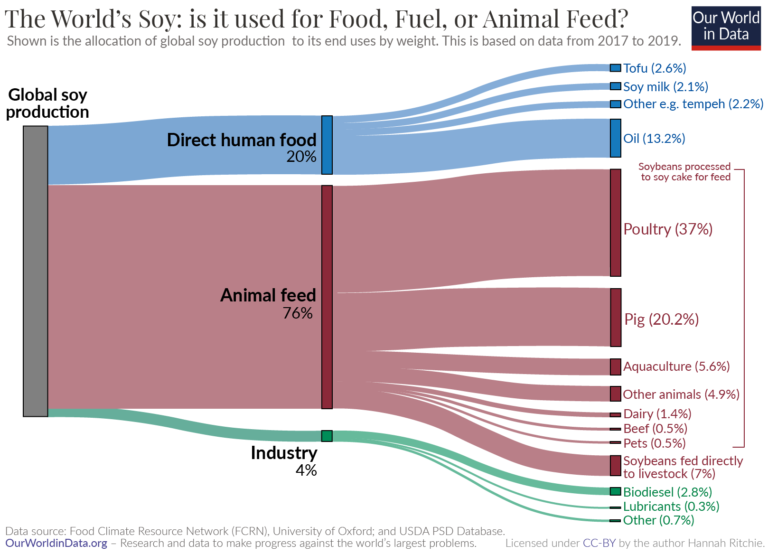I’m an opponent of factory farms and consider election night to be a fucking disaster. A few small bills may have passed, but the big picture stuff all went in the wrong direction.
I dont want to hear the myth of “small free range farm” people use to justify eating meat when they voted down Measure J and the Denver ordinance.
I’m interested to understand your perspective better- are you saying that the idea smaller less industrialized farms are less harmful to animal welfare than industrial ones, is a myth?
If so, I’d like to better understand why. I have an eating disorder and am not in a position to go vegan from a health standpoint, but I’d hoped that as I’m able (financially, and with respect to my eating issues) I’d be able to reduce my animal product intake and purchase my animal products from sources that treat animals better like smaller local farms, either shopping at a local butcher or farmers market.
Obviously I can still reduce my animal product intake as I’m able, but are you of the perspective that smaller, less industrialized farms are just as damaging to animal welfare? Or are you saying all farms these days, even small ones, are industrialized in the ways that negatively affect animal welfare?
If so, I’d love to hear about why, and if you know any sources I could take a look at I’d really appreciate it. That had been my plan in the future and if my plans might not yield what I was hoping for, I may need to re-evaluate what I can do, and what goals I might want to find ways to work towards.
Thanks for your time, hope you have a good one :)
One big issue is that the term “free range” is essentially meaningless as defined by the USDA, and often gives consumers the false sense that products marked as “free range” come from animals who had a higher standard of living than non-free range, therefore making their farming more ethical. In reality, this is basically never true.
To qualify as “free range” an animal needs to have “continuous access to the outdoors for 50% of its life”. Sounds good on paper, but “outdoors” isn’t rigorously defined in this standard. This means that situations that no reasonable person would call “continuous access to the outdoors” still count. For example, you could cram 1000 chickens into a small barn to the point where they barely have space to move, but as long as there’s a hole in one wall that opens into a tiny one-foot-by-one-foot pen with no roof, it still counts. If that teeny tiny “outdoor” space can fit at least 1 chicken, then congratulations, all 1000 are now “free range”. As long as you cater to some very specific loopholes, you can get away with factory farming while still having the legal right to claim on your packaging that your animals were treated humanely.
Terms like “organic” and “pasture raised” are similarly deceptive to the point of being meaningless, and so it’s basically impossible to know what conditions your food was subjected to during it’s life based on the packaging alone. Of course you can always try to do your own research about individual companies (or if you’re lucky enough to have access, individual farms), but there are lots of laws on the books protecting them from having to disclose specific details to anyone but the USDA, so good luck getting any meaningful information. There have even been cases of farm workers and journalists being prosecuted for things like sharing pictures of farm conditions or publishing personal accounts of how livestock were treated on private farms. Fortunately the “ag gag” laws that allow these whistleblowers to be prosecuted are rarer than they used to be, but there are still a handful of states that have them (if you tried to guess which ones, you’d probably get most of them right).
In reality, the only way to know if an animal was raised to your own standards of ethics is to raise it yourself.
Thank you very much for taking the time to explain, that was very helpful :)
My pleasure!
There is no way to feed all the people without factory farming. Reduce the population, or deal with the demand.
Sit with that.
Nah, there’s not enough land for animal products. The plant-based diet can feed everyone.
I’m dubious this is actually true
We now feed animals a ton of food and water just to then eat them. Don’t you think just feeding ourselves and skipping the middleman is more productive?
Basic high school biology on trophic levels. The “rule of thumb” is that you only retain about 10% of the energy each time you go up a level.
we feed them parts of plants we can’t or don’t want to eat. they help us conserve those resources.
This is true on small scale subsistence farms, but it breaks down when scaled up to the amount of meat consumption in typical developed nations.
Look at historical meat consumption for societies built on agriculture (as opposed to, for example Inuit who relied on hunting). You can also look at food consumption by nation: https://en.wikipedia.org/wiki/List_of_countries_by_meat_consumption Affluence and increased meat consumption are strongly correlated. And while veganism may be a luxury, so is high meat consumption. This would imply that modest meat consumption makes best use of these scraps and inedible parts of plants (i.e. efficiency), but that higher levels of meat consumption is wasteful of resources.
This is true on small scale subsistence farms, but it breaks down when scaled up to the amount of meat consumption in typical developed nations
I’m afraid you’re misinformed.

soy cake is a byproduct of soybean oil production. it’s about 90% of the soy we feed to animals globally. that’s one of the biggest ones, but you’ll find this repeated across the industry: corn cobs and corn stalks used in fodder, crop seconds like onions and tomatoes fed to livestock etc.
Or perhaps soybean oil is a byproduct of the animal feed industry. It sure shows up in lot of products, yet people aren’t typically running out to the stores buying bottles labeled as “soybean oil.” I.e. it’s a cheap industrial filler. Most likely, they are co-products that wouldn’t likely exist without each other due to the economics. It should also be noted that soy cake is human-edible, so feeding it to animals represents that inefficiency I was talking about.
Given that less affluent societies consume less meat (on average) compared to more affluent societies, this demonstrates that meat requires more resources to produce. Otherwise this discrepancy would not exist. Developing nations consume more meat as they become more affluent.
Which part are you dubious about?
Not enough land for meat? There is technically… but it requires factory farms and STILL we need to chop down huge swaths of the amazon to keep the machine churning.
Not enough land for plant based diets? Is takes only about 1/10th the amount of land to grow plants for human consumption than to grow plants for feeding our animals that we then consume. Sure not every alfalfa farm on the planet can switch to cucumbers out the gate, but well over 10% can…
commie is a troll. They’re very fun to argue with, but just know that you aren’t changing anyone’s mind when you do
I’m dubious that there is enough room for plants, but not meat
What do you think animals eat?
industrial waste, crop seconds, and grazed grass, mostly
Why? Every step you move up the food chain requires roughly 10x as much inputs as outputs. To get a pound of protein from a cow you have to feed it 10lbs of plant protein. Almost all cattle feed comes from farms, just like your veggies. Anywhere we grow soybeans and hay for cattle could easily be converted to growing fruits and vegetables for human consumption. There’s a small loss of efficiency by growing human-quality food instead of cattle food in these spaces, but its nothing in comparison to the loss of resources from trying to raise cattle.
Almost none of the meat we eat is truly free-range - it all gets fed farmed produce that comes from farms that could grow food for humans in a fraction of the space.
it’s not clear that grasslands could (or should) be converted to human crops.
They don’t need to be. Stop raising livestock and you no longer need to feed them, which allows us to use the remaining land to feed humans. But livestock only make up a small percentage of human diets, so we can actually give back a ton of land to nature and still easily feed everyone.
soy beans are an excellent example: they’re not grown for livestock. they are grown for people, and what is fed to livestock is industrial byproduct that would otherwise be waste.





